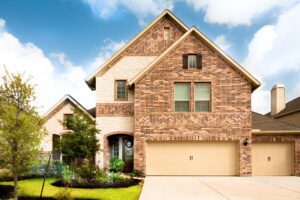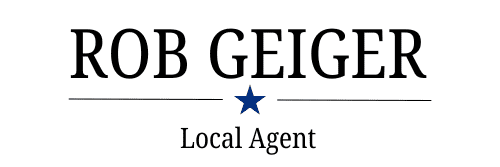How To Get The Most Out Of Your Home Insurance
Home insurance is divided into six main areas, called “coverages,” with plenty of add-ons available for a variety of protections consumers can select.

This is the amount of insurance coverage provided for your home and any attached structures. Almost all home insurance providers have “Real Cost Estimators” that accurately calculate the value of your home utilizing a variety of parameters like square footage, age of roof, location, level of customization, flooring, etc… Most companies require you to adhere to the Real Cost Estimation at a minimum, but you can always add more at your discretion.
Making it simple: If you were to suffer a total loss, the Coverage A amount is what you would receive to rebuild your house and attached structures. This does not include personal property, just the structure itself. Imagine if a giant picked up your house, turned it upside down and shook everything out, what’s left is considered your dwelling.
Insider tip: There is an add-on to Coverage A called “Extended Replacement Cost” I strongly recommend because it is so inexpensive compared to raising your Coverage A amount. Extended Replacement Cost kicks in when inflation or rising building costs means it costs more to repair or replace your home then was initially calculated. Extended Replacement Cost is usually available at 25% or 50% above your stated Coverage A. So, if your Dwelling is determined to be worth $400,000, you could get another $100,000 (25%) or $200,000 (50%) for a very nominal increase.
What Rob suggests: The Texas housing market remains very active and it’s common for shortages to occur, so I recommend at least 25% of Extended Replacement Cost to all my customers.
Covers those structures not permanently attached to your home. In most cases, Coverage B defaults to 10% of Coverage A, so in our example above, Coverage B on a $400,000 home would be $40,000. This number can sometimes be decreased and nearly always increased.
Making it simple: Coverage B would be used for things like a detached garage, gazebo, storage shed, pool house, barn, etc… We see a lot of customers in this area with multiple structures on their property so it’s important to accurately calculate what it would cost to replace those structures. It’s important to note that, in most cases, the value of “Other Structures” isn’t included in “Real Cost Estimators.”
What Rob suggests: Take your time figuring out what it would take to replace your other structures. Consult with a general contractor, if you can, or do some online comparisons. Conversely, if you don’t have any other structures, let your insurance agent know to see if there are any discounts to be had.
This coverage protects your personal property, whether you are at home or away from home, on a named-peril basis with certain limitations. Examples of personal property are things like clothing, appliances, and furniture. Most policies default the personal property coverage to 50 percent of Coverage A, although this can be adjusted in most cases.
What Rob suggests: There are two things I strongly urge my customers to consider regarding Personal Property coverage: Changing from “Named Peril” to “Open Peril” and switching from “Actual Cash Value” to “Replacement Cost.” While both changes add to the premium, I believe they are well worth the added expense.
Making it simple: A standard policy will cover your personal property on “Named Peril” basis, meaning you’ll be reimbursed for losses due to fire, lightning, wind, hail, aircraft, vehicle, riot, explosion, and smoke. Switching to “All Peril” covers damages due to any peril that is not specifically excluded from the policy.
A standard policy also uses “Actual Cash Value,” meaning your possessions will be subject to some level of depreciation when they calculate your settlement. If you add the “Replacement Cost” endorsement, your items will be replaced at what you paid for them.
Insider tip: Take a video of everything in your house. If you ever suffer a loss, it’s very hard to remember everything you had. A video will help tremendously in making an accurate claim.
Should your home become uninhabitable because of a covered incident, “Loss of Use” would cover temporary housing and living expenses which go over and above your normal expenses. For example, the cost of staying in a hotel and the difference between purchasing groceries and eating in restaurants would be reimbursed.
“Personal Liability” coverage comes into play if you are ever sued for someone else’s injury or property damage. A good example of this is if someone fell on your patio and sued you for their lost wages while they were unable to work. “Personal Liability” coverage also follows you everywhere, so if you bumped into someone at H-E-B and they fell into a display, suffered an injury and filed a lawsuit, you’d likely be covered.
What Rob suggests: Raising the standard $100,000 of “Personal Liability” coverage on most policies to $300K or $500K is usually just a few dollars. It’s worth considering an increase.
“Medical Payments to Others” helps you pay incidental medical expenses for a guest of your home that is injured. This coverage is really designed to help you keep someone from filing a lawsuit against you if their injuries are not extensive. If a lawsuit is filed, your personal liability coverage would take over. Usually available in $1K, $5K or $10K.
Deductibles:
In most cases there are two deductibles listed on a homeowner policy: “Other Perils” and “Wind/Hail.” In some areas of Texas, near the coastline, there can be a third deductible for “Named Storms.”
A deductible is the amount the homeowner must pay out-of-pocket prior to the insurance coming into play. The higher the deductible, the lower the premium. Usually, deductibles are available in certain dollar increments or as a percentage of Coverage A.
What Rob suggests: Since your deductible directly effects your premium, figure out how much you could afford to pay in the event of a loss and adjust your deductibles based on that number. As with auto claims, I would suggest saving my homeowner insurance for bigger issues to avoid an accumulation of claims on your record.
Making Your Home More Insurable
Here are some things I know insurance companies like to see. Some of them will even earn you a discount, so make sure you mention to your agent.
- Deadbolt locks on all exterior doors
- Smoke alarms (monitored is even better)
- Security systems (monitored is even better)
- Carbon dioxide detectors
- Fire extinguishers
- Fire suppressant systems
- Gated communities
Some Optional Coverages:
Water Back-Up
This coverage is for water that comes into your home after it backs up through a drainage or sewer pipe. Having suffered through this myself, I’m a believer.
Increased Personal Liability
With “Increased Personal Liability,” under Coverage E, the definition “bodily injury” is amended to include “Personal Injury,” which means any injury arising out of one or more of the following offenses:
- False arrest, detention or imprisonment, or malicious prosecution;
- Libel, slander or defamation of character; or
- Invasion of privacy, wrongful eviction or wrongful entry.
Ordinance or Law Coverage
This coverage applies if a covered loss to a building or other structure requires having to rebuild, repair or demolish the structure in accordance with building codes, laws or ordinances. As homes become older, local building codes may change requiring new construction standards. For example, damage to a home built in 1940 could cost more to repair, since it would have to be brought up to new code requirements. The coverage limit included in this policy is 10% of the Coverage A Limit. This endorsement increases the amount of coverage to 25% of the Coverage A Limit.
Physical Loss Protection for Computers
This changes the coverage on your computer equipment from a “Named Peril” policy that only covers the computers if they are damaged due to specific perils named on the policy (fire, lightning, wind, hail, aircraft, vehicle, riot, explosion, and smoke) and changes it to an “All Peril” policy that covers the computers if they are damaged due to any peril that is not specifically excluded from the policy.
Equipment Breakdown
This endorsement provides coverage for direct physical loss to covered household appliances caused by the perils of mechanical, electrical, and pressure system breakdown. For example, your property was hit with an artificially generated power surge. The water heater controls, security system, and media equipment were damaged. Selecting this coverage would allow you to be reimbursed for repair or replacement of these damaged appliances and/or systems.
Service Line
This endorsement provides coverage for repair or replacement of underground piping or wiring that provides electrical power, heating, natural gas, waste disposal, or water to their homes and that are damaged by a covered loss. For example, a storm uproots a tree on your property, damaging the underground power line in the process. Selecting this coverage would allow you to be reimbursed for repair or replacement of the damaged power line.
Identity Fraud
This coverage would help you in the event you needed to pay for legal advice and/or time off from work to pursue action against someone that stole your identity or perpetrated fraud against you.
